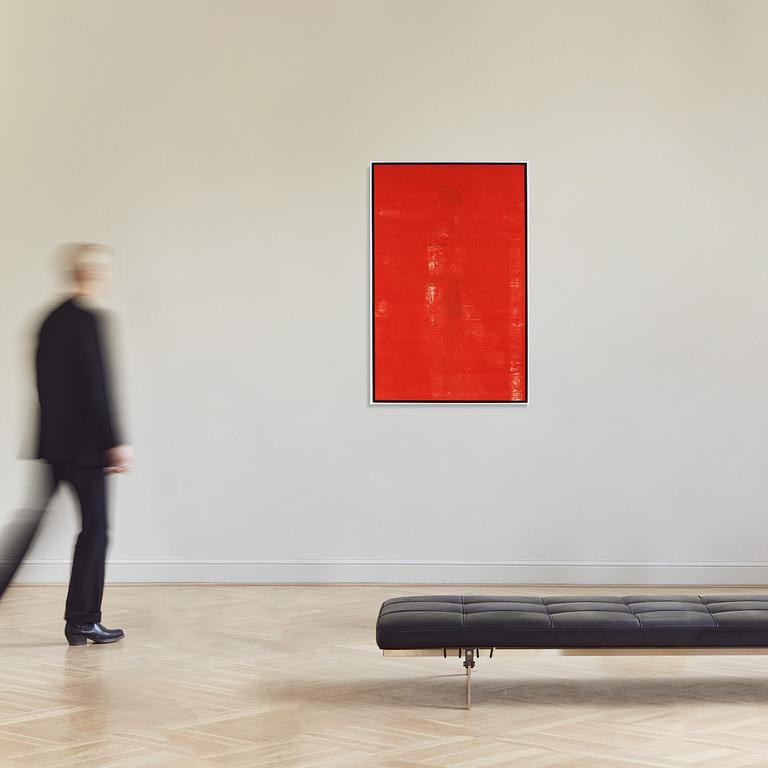Ola Billgren
"Kvinnofigur i landskap"
Signed Ola Billgren and dated -94 verso. Oil on canvas 156 x 100 cm.
Provenance
Stockholms Auktionsverk, Moderna Kvalitén, 4 May 2010.
More information
Billgren's paintings are characterized by duality and ambiguity, both in expression and content, and the dreamlike presence is unmistakable. The technique emphasizes this by always moving between the borderland of the realistic and the abstract - where the two opposites define Billgren as an artist.
His oeuvre goes through several phases, or metamorphoses, which are evident in his different periods. The early extreme realist painting later moves towards less representational, culminating in the red period where the paintings are covered with a bright red color that meets the viewer. Billgren chooses to reduce the original image and with the addition of the red, Billgren creates a painting that has found its final form through processes of construction and reduction.
This is how the artist himself expresses it in the catalog that accompanied the exhibition at Galleri Engström in 1996:
The task of painting is to be a discourse on seeing and not to classify natural things. This was at least my starting point when I began experimenting with (quasi-)monochrome painting in cadmium red three years ago. At first, it seemed most appropriate from the point of view of the color experience to refrain from any representational content, but I changed my mind after a period of investigation. I had been attracted to the color red mainly because of its paradoxical nature: it simultaneously delights and attacks, flatters and humiliates the eye. It turned out that the interpretation of this relationship was facilitated by the introduction of an operator in the form of a simple motif, such as a portrait or interior (faces, furniture, etc.), which energetically appealed to the viewer and gave a less peaceful meaning to the observation. In this way, by filling the place of the referent, I hope to say something about visual necessity: about both the will to see and the will to be seen, and also to provide an uncensored version of the symbolic register of the red. In other words, what I am trying to do is to make the color open up semantically through some analysis, so that its more or less given meanings are illuminated in context."
The current catalogue number 'Female Figure in Landscape' from 1994 shows exactly the elements that we recognize from the red period where we see in the background a strongly reduced but still recognizable image of a female figure.
Artist
Ola Billgren was born in 1940 in Copenhagen but based his career in Sweden. Billgren was self-taught, having only been trained by his parents Hans and Grete Billgren. Ola worked within the mediums of graphic art, watercolour, collage, photography, film, and scenography. He was also an author and culture critic. Known for his versatility, Billgren cultivated a relationship between art and reality in his work.
During the 1960s, he transitioned from abstract expressionism to photographic realism. Over time, his paintings evolved into a fusion of abstract and photorealistic styles, resulting in romantic landscapes where he examined the interplay of light and color. Forms dissolved, and colors were reduced to monochrome, single-colored surfaces that were richly worked and varied.
In the late 1980s, he returned to urban environments in large cityscapes, often painted from a high perspective but maintaining the impressionistic approach seen in his landscapes. Ola Billgren's influence on recent decades of art has been significant. His work is represented in institutions such as Musée National d'art Moderne Centre George Pompidou in Paris and Moderna Museet in Stockholm.














































